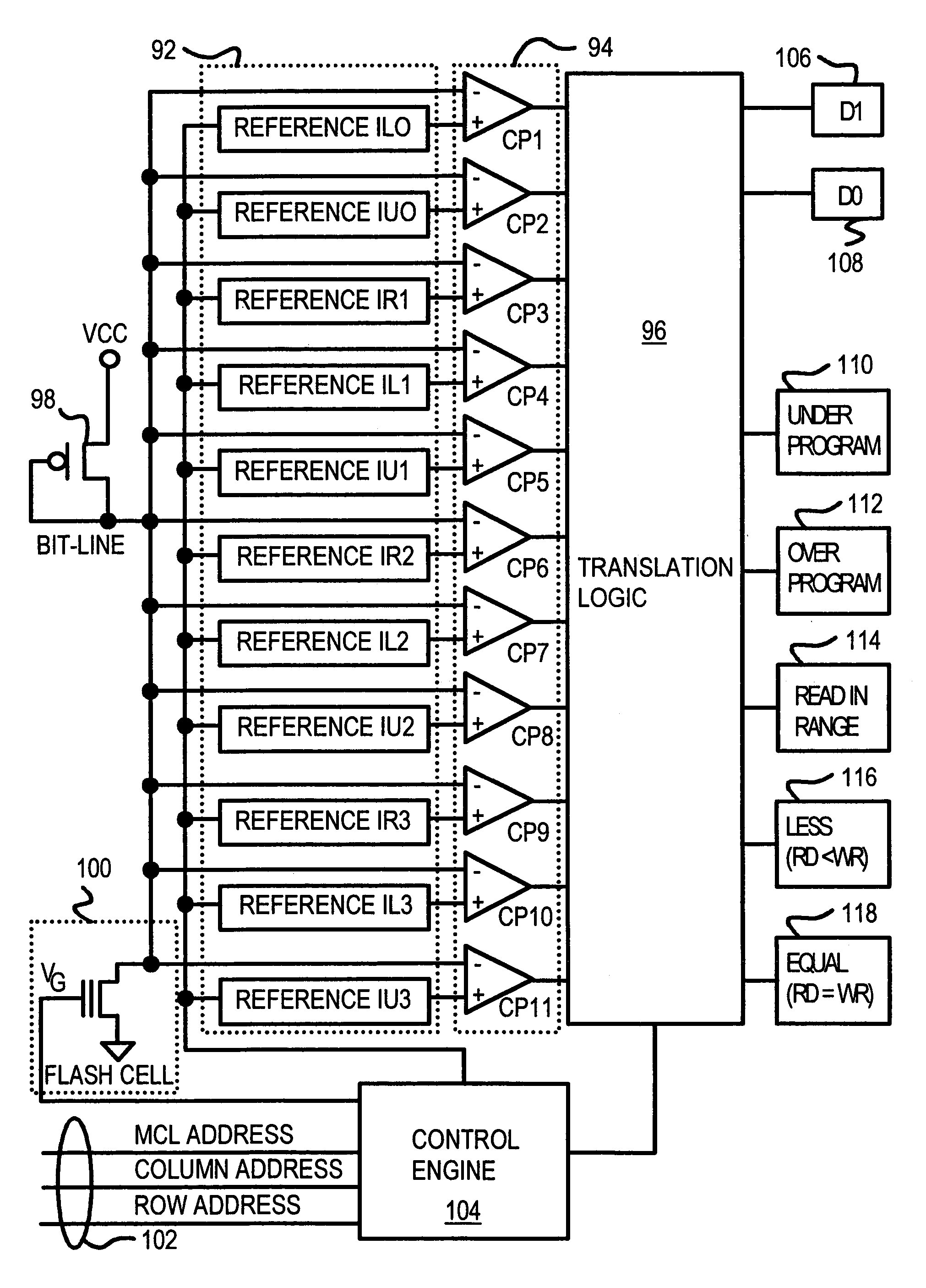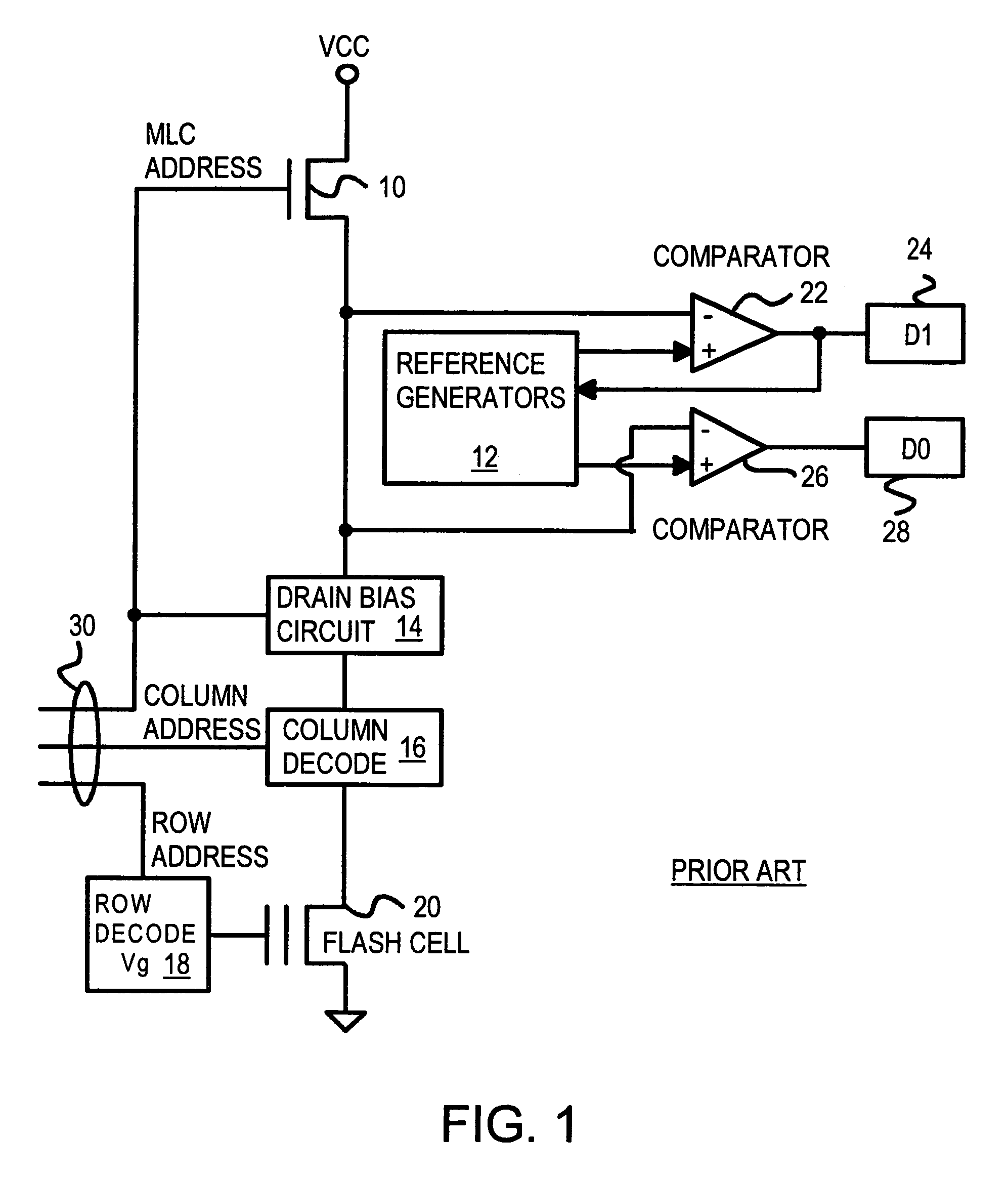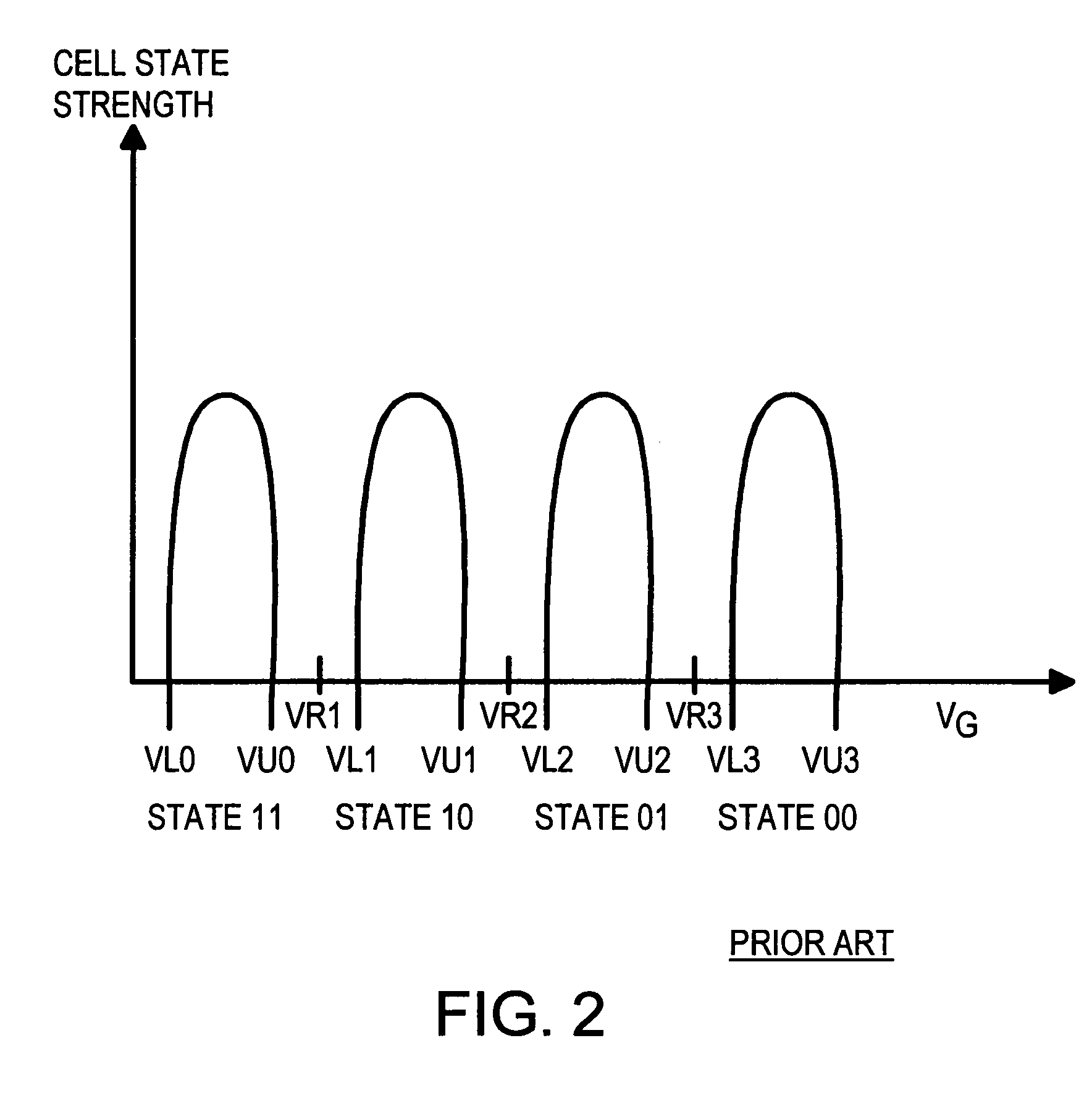Flash memory device and architecture with multi level cells
a flash memory and multi-level technology, applied in static storage, digital storage, instruments, etc., can solve the problems of reducing the cell state strength of the cell, and reducing the efficiency of flash cell transistors
- Summary
- Abstract
- Description
- Claims
- Application Information
AI Technical Summary
Problems solved by technology
Method used
Image
Examples
Embodiment Construction
[0040]The present invention relates to an improvement in multi-level cells. The following description is presented to enable one of ordinary skill in the art to make and use the invention as provided in the context of a particular application and its requirements. Various modifications to the preferred embodiment will be apparent to those with skill in the art, and the general principles defined herein may be applied to other embodiments. Therefore, the present invention is not intended to be limited to the particular embodiments shown and described, but is to be accorded the widest scope consistent with the principles and novel features herein disclosed.
[0041]FIG. 4A shows a FLASH-memory transistor. A FLASH cell can have just transistor 68, or can also have a select transistor in series between the bit line and the drain. Control gate 60 is connected to a word (row) line, while floating gate 62 is isolated from all other nodes by insulators such as oxides. A thin tunneling oxide be...
PUM
 Login to View More
Login to View More Abstract
Description
Claims
Application Information
 Login to View More
Login to View More - R&D
- Intellectual Property
- Life Sciences
- Materials
- Tech Scout
- Unparalleled Data Quality
- Higher Quality Content
- 60% Fewer Hallucinations
Browse by: Latest US Patents, China's latest patents, Technical Efficacy Thesaurus, Application Domain, Technology Topic, Popular Technical Reports.
© 2025 PatSnap. All rights reserved.Legal|Privacy policy|Modern Slavery Act Transparency Statement|Sitemap|About US| Contact US: help@patsnap.com



